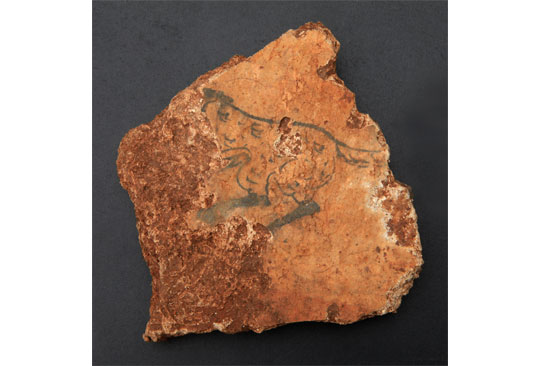A Koguryo Mural Tomb was found in Ryonggang County, Nampho City
Recently the research groups of the Korea National Heritage Preservation Agency and the Nampho City National Heritage Preservation Agency have newly excavated a Koguryo mural tomb in Undok area, Ryonggang County.
The tomb is situated on a hillside to the north of the area and 1.5km to the west of the Ryonggang Great Tomb and the Twin Column Tomb, which were inscribed on the World Heritage List.
It is a single chambered and earth-mound tomb including an entranceway and an inner chamber.
At the entrance, there stands a granite stone gate which is 125cm high, 60cm wide and 9cm thick with iron rings, 10cm in diameter.
The entranceway lies to the east from the middle of the south wall of the inner chamber which is square. On the ground, there is a low rectangular stand for a coffin to the west. The south and west walls are left quite well. Each wall is about 3.17m long and 1.5m high.
The main motif of the mural paintings is four guardians. A white tiger is depicted on the west wall with a red-eye head, a long body and a flying crooked tail.
During the excavation, fragments of the murals depicting the head and forefoot of a tiger or a dog, the haunch of a horse and liana patterns on the edge of the ceiling were found. A coffin nail was discovered on the stand.
Archaeology Society of the DPRK has examined the excavation results and concluded that the tomb dates back to the 6th century and is a Koguryo tomb with murals of four guardians which discovered for the first time in the Ryonggang area. It also assessed that the tomb was of a great importance in studying the history and culture of Koguryo, especially the burying custom, as it was left with a stone gate with iron rings that is quite rare in other contemporary tombs.
New discovery of the mural tomb is enriching the historical and cultural achieves of the Koguryo Kingdom, contributing to building up a great pride and self-confidence on the brilliant and time-honoured national history among the people, especially the young generations.
For detailed photographs, please go to the “National Heritage” of this homepage.
